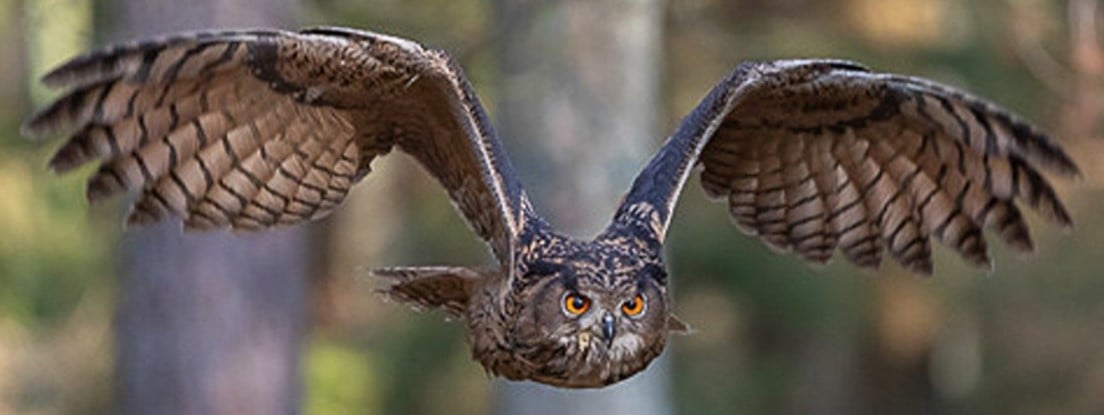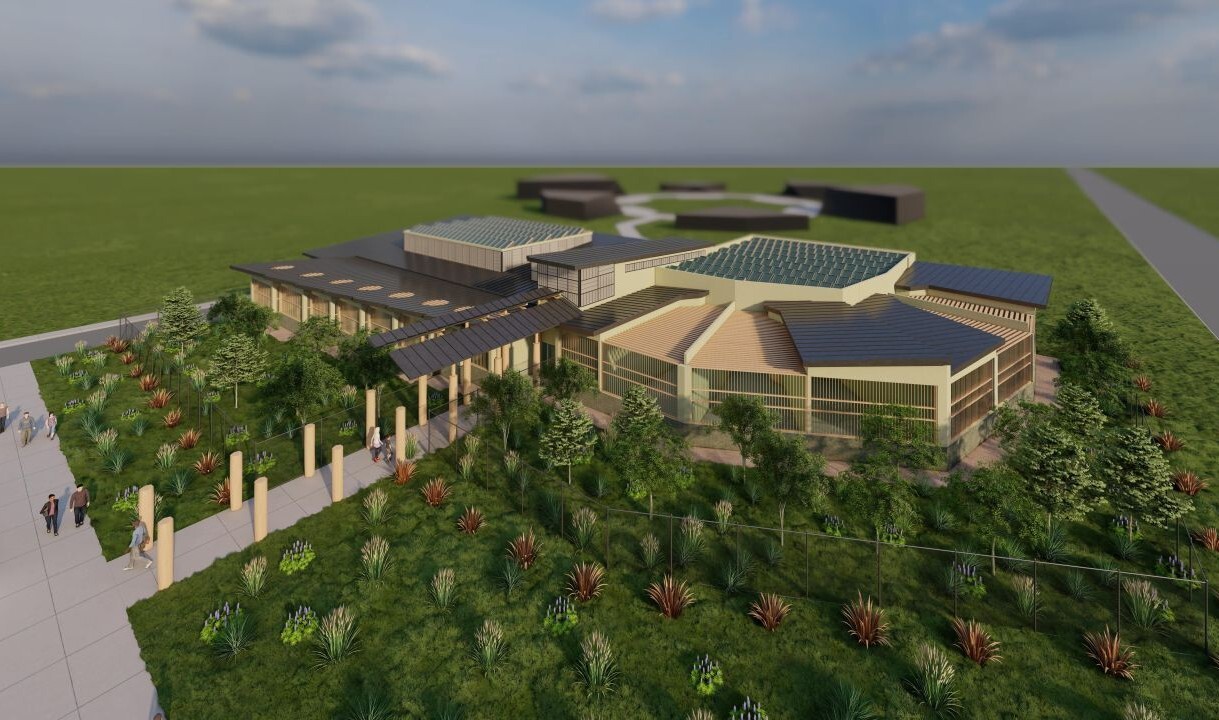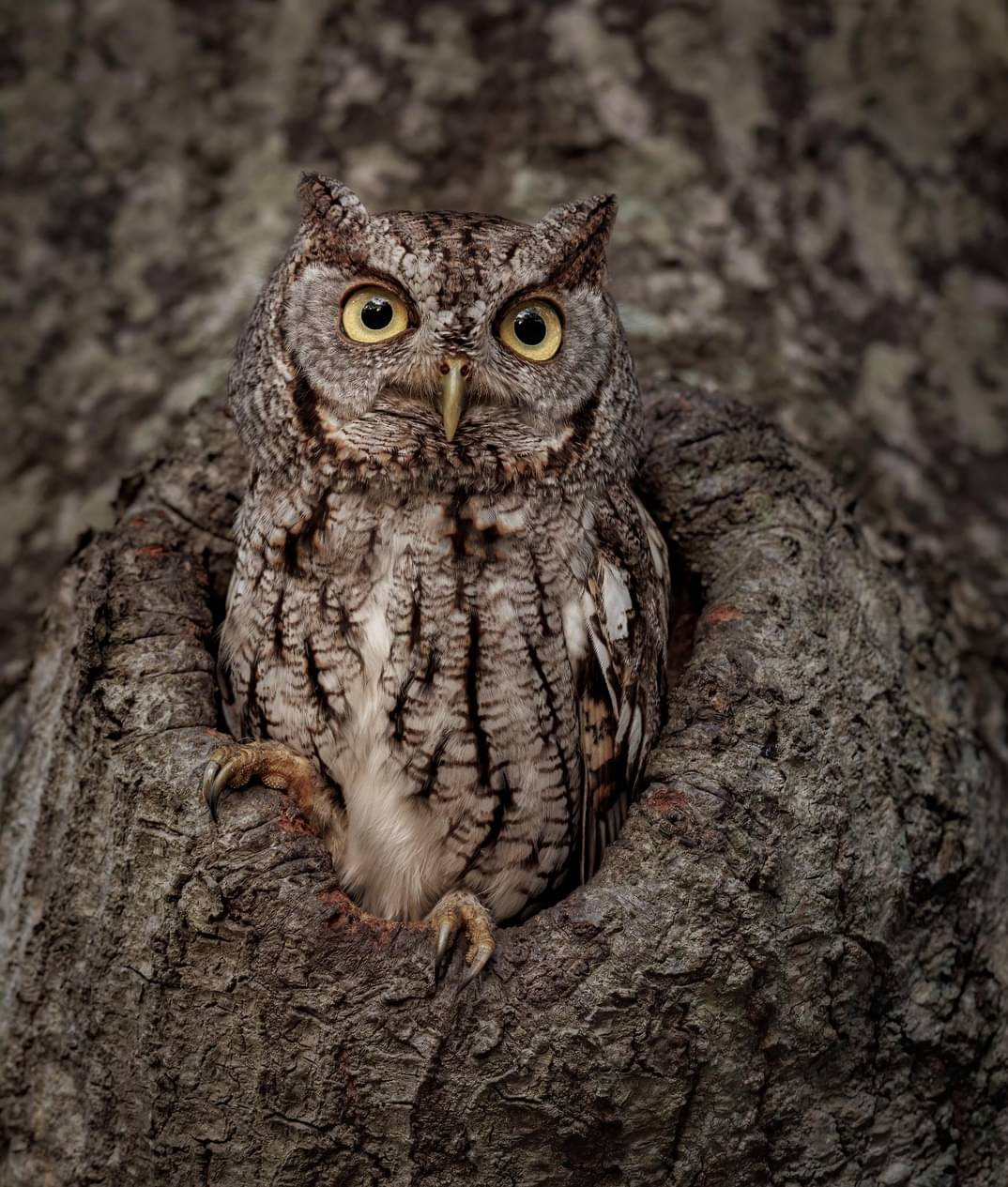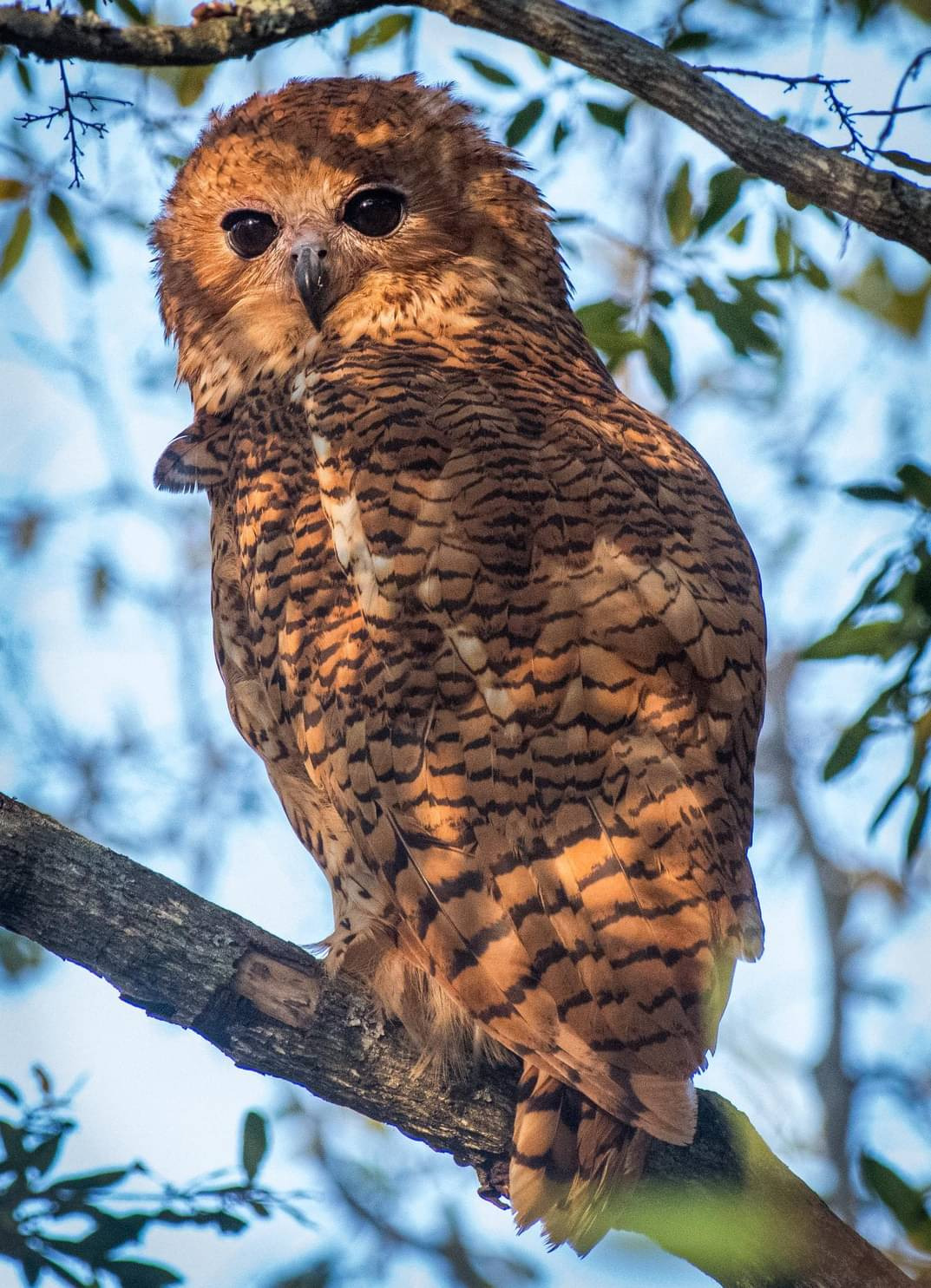When one imagines Russia’s snow-covered taiga, a Siberian tiger is the creature that may most often pad silently through the conifer forests of the mind. But Jonathan Slaght wants us to envision a different creature, a giant bird sweeping through the night skies of this remote wilderness in his new book Owls of the Eastern Ice (Farrar, Straus & Giroux, 2020).
Blakiston’s Fish Owl, named after the English naturalist Thomas Blakiston, is the world’s largest owl, weighing up to a hefty 10 pounds. It ranges from the eastern woodlands of Hokkaido, Japan, to the Primorye territory in the south of Russia’s Far East where between 200 and 400 fish owls are thought to dwell. It was here that Slaght first encountered the species as a young wildlife biologist.
Twenty years ago, while on a hike in the Primorye forest, Slaght and a friend unexpectedly flushed an enormous bird from its hiding place. The creature took to the air, hooting its displeasure. At first, Slaght was unsure what kind of bird was flapping away from him. “It was clearly an owl, but bigger than any I’d seen,” he writes. The beguiling bird was the size of an eagle, a little fluffier and portlier, with huge ear tufts. It seemed “almost too comical to a real bird.” The creature crashed through the trees and disappeared out of sight. When he returned home, Slaght scanned an old field guide but didn’t think “the floppy goblin” matched any animal contained within. Fortunately, he had snapped a few grainy photos which he sent to an ornithologist friend who confirmed it was indeed a Blakiston’s fish owl.
But no one had seen that owl that far south in a century. Slaght’s encounter was critical evidence that the species still persisted there. The sighting ignited a lifelong passion.

A female Blakiston’s fish owl, alert and with ear tufts erect, is about to flush upon Jonathan Slaght’s approach in March 2008.
Today, Slaght is one the few people in the world who studies fish owls, and serves as the co-founder of the Blakiston’s Fish Owl Project, as well as being the Russia and Northeast Asia program coordinator for the Wildlife Conservation Society.
Cumulatively, Slaght has spent years of his life in the field, trekking into remote frigid study sites in the Russian wilderness — sometimes following fresh tiger prints — to learn more about the bird. In Owls of the Eastern Ice he chronicles his experiences and misadventures as an American researcher in Siberia, while slowly revealing the fish owl’s secret world.
Unfortunately, despite its remote locale, the species is endangered. The International Union for the Conservation of Nature’s Red List estimates that only 1,500 to 3,700 fish owls remain in the wild.
Though the owl has a wide range across Asia, it lives at low densities and has evolved to specialize in fish hunting instead of munching on plentiful mice like its relatives. With the widespread loss of riverine forest in the Far East, as well as increased development, dam construction, and fish nets along riverways, the bird’s long-term survival is uncertain. Many owls drown in salmon nets. Others are shot by curious hunters. Slaght and his Russian biologist colleagues aren’t just studying the great bird, they’re working diligently to protect it.

Sergey Avdeyuk (right) and Jonathan Slaght attach a color leg band to a juvenile fish owl, the third one caught in the span of an hour in the Kudya territory in March 2009. The band allowed the researchers to identify this owl as an adult years later, some forty kilometers away, on the other side of a mountain range.
Mongabay recently spoke with Slaght about his new book and about what conservation solutions might save Blakiston’s fish owl.
Mongabay: How did you come to research the fish owl and what intrigued you about the species?
Jonathan Slaght: I first went to the Russian Far East in the mid-1990s. I was into birds, not super-duper, but I was a bird watcher. I got this book, The Birds of the USSR, which was the only field guide that was applicable to that region at the time. I flipped through to figure out what was going to be there, and what were the possible rarities.
The fish owl popped out immediately. It was so mysterious. There was almost no information in the species account section. From then on, it was always in the back of my mind as this magical creature that lived in these hard-to-reach forests. And I realized I was probably never going to see one because they were so cryptic. So when I saw one, by chance, in Primorye in 2000 — which is how the book opens — I didn’t believe it at first.
Mongabay: Can you describe the fish owl for those who have never seen one?
They’re huge birds. They’re improbably big. Even today when I see one, I’m taken aback by just how large they are. One time I was out in the field with a colleague and we looked over, and 200 meters away there was something in the tree. The guy I’m with was like, “Is that a bear?” I pulled out the binoculars and said, “Nope, that’s a fish owl.”
They’re the size of a fire hydrant with a six-foot wingspan. They’re sandy brown in color and their whole presentation is floppy. The ear tufts are floppy. The plumage is so dense that any time the wind hits them they’re just a wave of floppiness. They’re very comical birds. And they spend more time on the ground than most other owl species. A lot of the time they’re hunched over, walking along through the forest.
Mongabay: What are the key threats to the fish owl’s survival?
Like most endangered species, the threats are habitat loss and poaching. Poaching is less of a direct threat as most of the poaching is not targeted. It’s almost like bycatch. People will sometimes hunt these things because they see this improbably large bird in the forest and they want to know what it is. So they shoot it, they walk over, say “Oh, it’s a giant owl,” then they leave it there and walk away. The fish owls do get caught in salmon nets set by poachers to catch fish.
In terms of habitat needs, I’d say the big thing is fish. There’s a lot of unsustainable salmon harvest going on. And birds can’t have chicks if there isn’t enough food to eat. In Japan, where they don’t have these same fishing pressures, the owl’s reproductive output is basically twice as high. That could be incidental; I don’t know for certain that the cause of a lower reproductive output in Russia is because of greater fishing intensity, but there’s some pretty great fishing pressure going on in those rivers.
Mongabay: What are some of the conservation solutions to protect fish owls?
People access wilderness areas by road. And the logging road network in Primorye facilitates that. We are working with the primary logging company there to identify where they have roads that go into high biodiversity areas and therefore limit access to those roads. If you block off a road or limit how vehicles can travel on a road, then you’re reducing the number of people who are going to take in a minivan full of nets and set those along the river. You’re going to stop the people from going in and harvesting trees. You’re going to stop fish owls being hit and killed by cars. And it’s not just benefitting fish owls. That’s good for everything.

A fish owl nest observed in April 2008, with a just-hatched, still-blind chick; the narrow Saiyon River is visible below. The second egg never hatched.
Mongabay: In your book you say that the fish owl is as much a symbol of Primorye as the Siberian tiger. What are some of the other species the fish owl shares its terrain with?
The fish owl is one of the really unique ones. It’s essentially the largest owl in the world that is an aquatic prey specialist living in a place where most waterways freeze in winter. That’s automatically going to make it one of the cool kids on the block. But there’s also musk deer which look like vampire kangaroos. The males have these elongated canines, really well-developed hind legs and weigh as much as a cocker spaniel. They don’t so much walk as prance. So you have these cute little things prancing around in the woods — with fangs!
Primorye is also the nexus of the boreal and subtropical biomes. You’ve got all these things in Primorye that are at the northern extent of their range. These are things you would associate with subtropical forests — that’s why there are tigers, leopards, raccoon dogs and Asiatic black bears there. All these more southern species get up there and that’s where they stop because after that it just becomes the boreal forest. Then you also get the boreal species, like Asian lynx and brown bears. It’s the only place in the world where there are brown bears and tigers in the forest. It’s not a human world there. It is wilderness and humans are lucky to get by.
Mongabay: What is the role of the fish owl in this unique ecosystem?
There are three species of salmon that run on the rivers — that’s a direct relationship. In winter when I’m looking for owls, I regularly see tiger tracks. The tigers are walking on the frozen rivers just like I am because it’s like asphalt. The tigers are using the rivers as travel corridors. Some of the trees that are big enough to be fish owl nest trees are also potential hibernation sites for Asiatic black bears. You never know when you’re walking up a tree if you’re going to find a fish owl or a bear.

A fish owl pauses in shallow river water with its fresh kill, a young masu salmon, before swallowing it whole in 2017.
Mongabay: What were some of the challenges you faced conducting your fieldwork in the Russian Far East where there’s not a lot of infrastructure?
The biggest initial problem was figuring out how we were going to catch these things. There was no real information in the scientific literature about how to catch a fish owl. We were largely on our own to figure out the nuances.
Thankfully, Russians are pretty adept at improvising in a place as remote as the Russian Far East where you need to make something out of parts that don’t intuitively fit. I was lucky to be working with extremely skilled Russian biologists who were able to figure out how to do fieldwork in that area. When we came across a flooded river, instead of waiting for the floodwaters to go down to cross, they just created a snorkel for our truck out of tape to prevent the engine from flooding and we were on our way. Otherwise we would have been stuck.
Mongabay: What made you want to write a book on the fish owl?
I wanted more people to know about it — that there is a bird out there that is giant and magical and eats salmon. People will care about something they know about and if they care about it then maybe we can have a world where both of us still exist. If there are ways to make connections between a reader and a species whose existence largely depends on how we manage forests and rivers, that’s a connection I want to make.

A fish owl threatened by researcher Sergey Surmach’s approach, ruffles its feathers in an attempt to intimidate him into backing off in 2006.



































